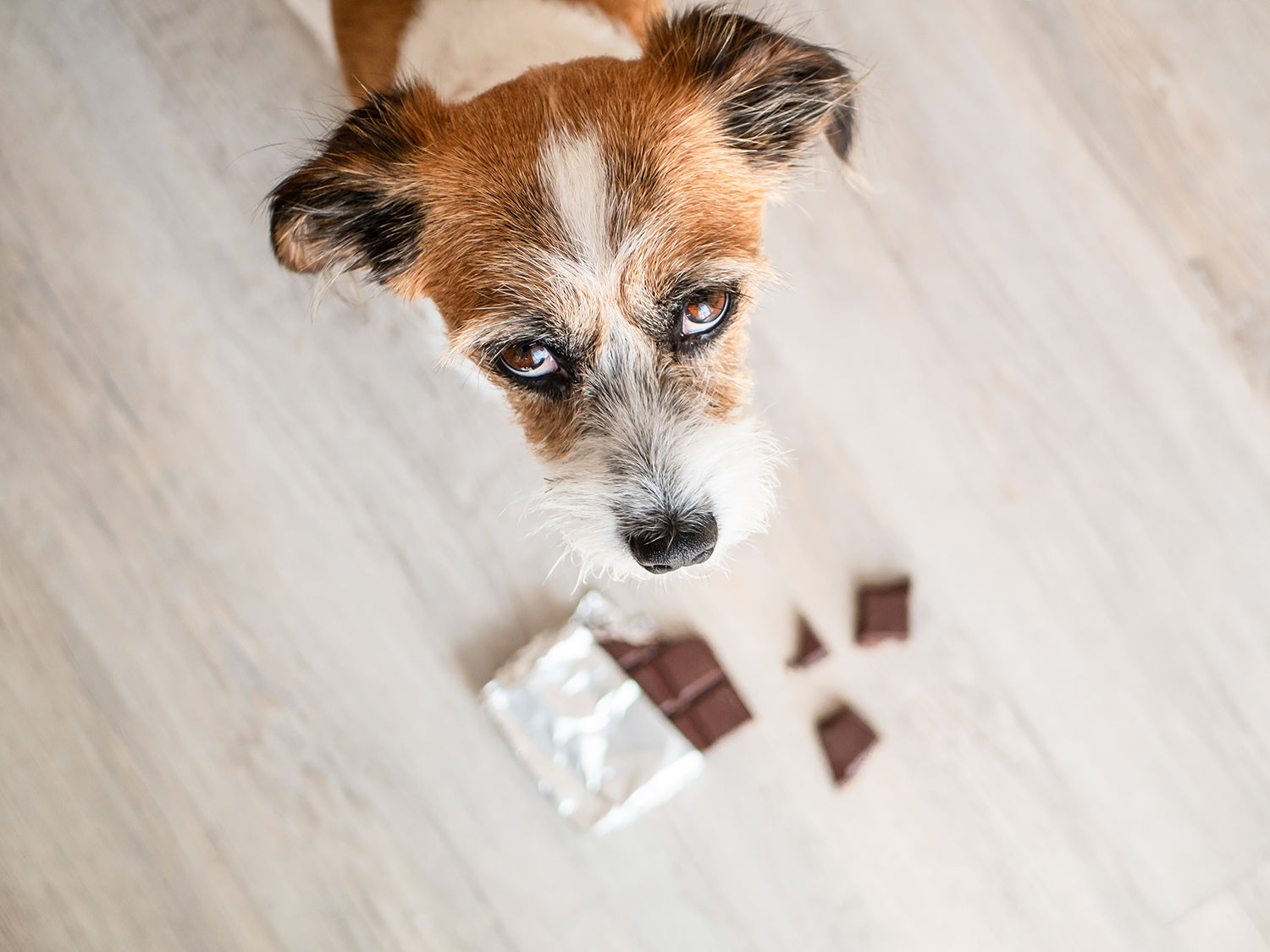In Australia, we have about 29 million pets, and it makes me proud to say that the pet ownership rate is one of the highest in the world. About 61% of the households in our country have pets and dogs have the highest percentages (40%) to be a member of the family compared to other animals that we love to pet. An honest testimony of our love for the pets can be reflected by the amount we spend annually for the pets - about 13 billion dollars a year, a significant amount indeed.
I am a proud owner of two golden retrievers and I try my best to return the unconditional love they have for me. As such, I try to be careful when I feed them. And hopefully, most of us, the dog owners of Australia should know that dogs and chocolates are not the two things that we can put in each other’s company and be hopeful that nothing will ever happen.
But the irony is, chocolates are causing health hazards for our canine friends and in some cases, those hazards reach up to the level of being deadly, despite the fact that chocolates are poisonous for the dogs.
But why chocolates, the food that God gave us, cause problems to the best friend of us? Let’s see what science has to say about that.
What Is The Problem?
We, the human beings and dogs are possessed with similar tastes. Both of us love sweets and absolutely have no problems whatsoever in indulging ourselves in chocolates. For us humans, chocolates like the handmade premium chocolates from the Melbournian outfit Schoko Chocolates have numerous health benefits. But sadly, that isn’t the case for the dogs — it is poisonous for them and can be lethal in some cases.
Chocolate, as we know it and consumed with love actually originates from the processed seeds of the cacao tree. These bitter seeds are rich in containing a group of chemical compounds known as methylxanthines. This family of chemicals has caffeine and theobromine and these particles create a bond with the receptors on the surfaces of cells and formulate blockage for the natural compounds that usually get stuck there. Now, for dogs, minimal doses of methylxanthines can propel the dogs to vomit or bring diarrhea. On the other hand, the exact same incident creates euphoria in humans.
Now, we have to remember that there is a choke full of theobromine and smaller amounts of caffeine in the cacao beans, otherwise known as cocoa seeds. After ingestion of a handful of theobromine or caffeine, dogs will suffer muscle tremors, and in some cases even seizures. Also, these chemical component parts of chocolates can induce a dog's heart to beat to twice or more than its usual rate. So with the little fear of heart failure, some dogs may start running as if they are injected with the purest form of espresso directly to their blood. Both caffeine and theobromine cause elevated heart rate and blood pressure, and abnormal heart rhythms.
An increased level of cyclic adenosine monophosphate (cAMP) starts happening after consumption of theobromine. Theobromine and caffeine also heighten the adrenalin release and adversely influence the calcium flowing in and out of the cell. As a result, severe muscle contractions may occur. But the worst problem is, the combination of all these biochemical alterations shake up the central nervous system and the heart muscle.
Another reason for theobromine being poisonous for the dogs is that they can’t dissect or metabolize this chemical. As a result, theobromine remains intact in their physiological system and over a certain threshold, the compound becomes toxic.
How Much Is Too Much?
Per gram of chocolate has about 1-9 milligrams of theobromine, with higher concentration in dark chocolates and white chocolates have very little to zero or no theobromine which reduces the risk of toxicity substantially.
Toxicity to chocolate for the dogs will start to have an effect if a dog consumes theobromine at around 20mg per kilogram of its body weight. For example, a dachshund weighing 5kg needs to eat 70g of milk chocolate or 20g of dark chocolate to get about 100mg of theobromine into its system to suffer severe consequences.
Cocoa powder is even more dangerous – a mere 4g of cocoa powder has about 100mg of theobromine.
Please have a look at the following list compiled by the USDA nutrient database. The list is telling us about various chocolate/cocoa products containing the amounts of theobromine per 100 grams:
- Unsweetened cocoa powder: 2634 mg
- Dark chocolate (70% cocoa): 802 mg
- Factory Made Chocolate Bars (twin bar): 39.9 mg
- Baking chocolate (unsweetened): 1297 mg
- White chocolate: 0 mg
How Would You Know?
If you think reading the previous facts and findings to your dogs will prevent them eating unattended chocolates, you will be surprised. Your friend won’t be bothered the least and keep doing the same no matter how hard you try. So, how do you know that they disobey you and get themselves into trouble?
The first sign would be that even if your dog has a reputation of being the most idle dog in the whole known universe, it would be hyperactive and would want to do everything at once. It should be obvious by now that poisoning from chocolate primarily attacks the heart, and the central nervous system and kidneys are also affected. Theobromine toxicity symptoms generally come out in the 6 to 12 hour window after the dog consumes excessive chocolate. As we have discussed earlier, the severity depends on the quantity and the dog may endure the aftereffect of the toxicity up to 72 hours. Primarily those include the following:
- Vomiting
- Diarrhea
- Restlessness
- Increased urination
- Tremors
- Elevated or abnormal heart rate
- Seizures
- And in some extreme cases collapse and death.
What To Do If The Dog Eats Chocolate
When the dog starts showing symptoms and you are suspecting chocolate poisoning, the first thing you need to do is to call the veterinarian. Depending on the size of the dog and the probable amount and kind of chocolate taken, the veterinarian may ask you to go to the clinic immediately. If the conditions are getting serious and you may be far from the clinic, the veterinarian may suggest you induce the dog to vomit.
Final Thoughts
The first thing we should always remember is that chocolate is as tasty to dogs as it is to us. And incidentally they can smell chocolates from miles away. Sadly many of us who own dogs have no idea that chocolate is poisonous for our pets and intentionally chocolates are offered as snacks or as a treat to the dogs by us. If the dog is a big Great Dane, then it probably would withhold the effects, but it wouldn’t be the same for the smaller breeds.
On other hand, if you know chocolates’ poisonous effect to the dogs, you must act responsibly and make chocolates inaccessible to the dogs. It is always wise to keep chocolate items on a high shelf where the doors are locked or better yet, keep them in a closed-door pantry. It is also your responsibility to let the guests and children know that chocolate is potentially lethal for dogs. As it is understandable, dogs suffer the most chocolate poisoning around major holidays like Christmas, Easter, or Valentine’s Day. Festivity makes us joyous and we let our guards down. That’s why we have to be super careful during these times.
Now, go enjoy our special treats and let your dog love you.



